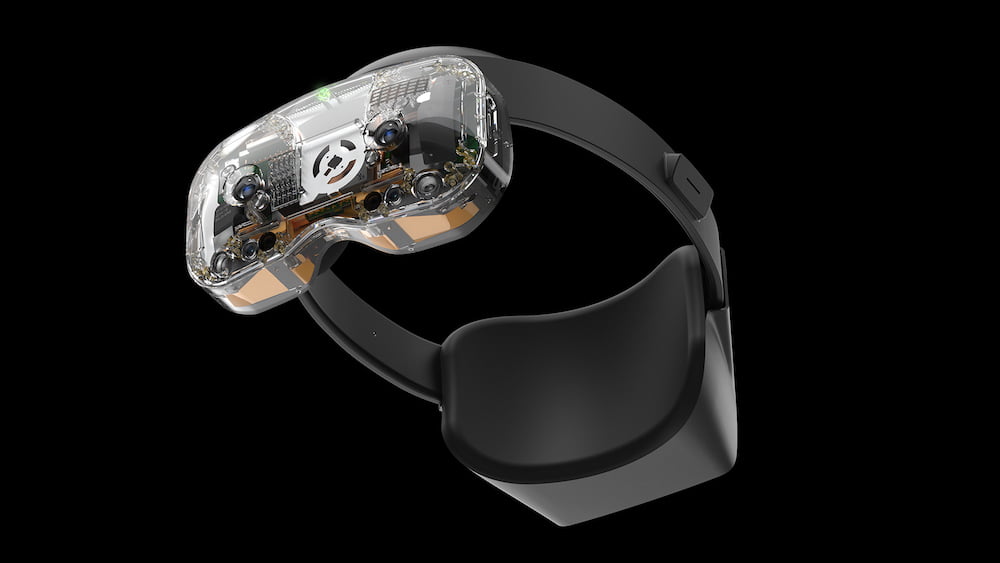Passthrough AR headset Lynx R-1: What's going on?

The Lynx R-1 could become the first commercial AR video passthrough headset. What has happened since the Kickstarter campaign, and what is the status of the project?
The Lynx R-1 runs autonomously and handles both virtual reality and augmented reality. In the latter mode, the environment is captured with integrated cameras and shown as video on the displays, where it can be enriched with digital elements.
Video-based augmented reality has major advantages over conventional AR glasses with transparent optics (Hololens, Magic Leap, Nreal Light). These include a wide field of view and a non-transparent presentation of digital elements. Corresponding devices are also easier and cheaper to manufacture because they use proven VR technology.
Meta is also launching video AR glasses this year (see Project Cambria), and Apple, Google, and Microsoft are also rumored to be working on devices of this type. Paris-based startup Lynx may beat them to it.
Production on schedule
The Lynx R-1's Kickstarter campaign ended at the end of November, with around 1,200 backers contributing 725,000 euros to the project, more than double the targeted funding goal. The devices are scheduled for delivery in April 2022.
On its Kickstarter page, the startup gave an update on the project's status at the beginning of February. According to the update, development is progressing well.
A visit to the manufacturer is planned for the end of the month or in March at the latest to get production up and running. The chip crisis is not expected to affect production, as the order was placed before the bottlenecks.
Since the Kickstarter proceeds will not fully cover the production costs, the startup is looking for investors until the end of February. The money is to be invested in new skilled employees for the development of software and hardware, among other things.
VR controllers could be delayed
The Lynx SDK will be released in late March and will support the industry standard OpenXR, which should make it easier to port VR content to the Lynx R-1. The Unreal Engine and Godot are supported via OpenXR. Both the SDK and OpenXR plugins will be open source, allowing for the integration of other graphics engines. As for the operating system, Lynx switches to Android S.
The primary input method is optical hand tracking, with Ultraleap providing the associated algorithms. Lynx has already shown how well hand and finger tracking works. Lynx has partnered with third-party manufacturer Finch to produce the VR controllers, which are sold separately. The startup is still making changes to the hardware and writes that delivery could be delayed.
Lynx R-1: Market launch in June 2022
Content for the Lynx R-1 is to be distributed via Sidequest, with details to follow later. The startup also promises support for Nvidia's CloudXR steaming, replaceable batteries, and unlimited tracking range, but advises against using the device outdoors.
Kickstarter backers are to be supplied first. Only then will the regular buyers follow, with Lynx specifying June as the time window. In the official store, the video AR glasses cost $599 (Standard Edition) and $1,099 (Enterprise Edition). The Kickstarter units were sold at a lower price.
More details on the current status can be found in the following Youtube video.
Read more about VR/AR:
- Qualcomm expands into Europe for VR and AR
- Google Labs: 700 employees work on AR, blockchain, Web3 and more
- Clearview AI working on data glasses with facial recognition
Note: Links to online stores in articles can be so-called affiliate links. If you buy through this link, MIXED receives a commission from the provider. For you the price does not change.